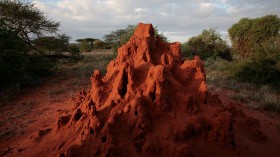Black bear attacks have been documented in the past, but does this suggest they are generally dangerous animals? Experts and wildlife agencies have reports that can help park visitors and locals understand black bear encounters.
That's a Black Bear.
Black bears, the most prevalent bear in North America, usually have black fur, but depending on where they live, their hair can also be gray, cinnamon, or even white.
In contrast to brown and grizzly bears, black bears don't have a shoulder hump, and their rear rump rises higher than their shoulders. Black bears are smaller compared to other bears, which is the most obvious feature. On all fours, they may reach heights of 2 to 3.5 feet at the shoulder, compared to the quadruped height of three to five feet of brown bears, according to reports from USA Today.
Black Bear Attacks
Black bears can be spotted in campsites with inadequately kept food and trash, according to the Connecticut Department of Energy and Environmental Protection; however, on trails, they often run away once they spot a person.
Black bear attacks that result in fatalities are uncommon, particularly when viewed alongside attacks by other bear species, although these animals may still be quite hazardous. Many scientists think that an apparent rise in the number of bear assaults that have been documented is directly tied to growth in outdoor activity, human populations, and urbanization.
Black bears are often rather timid and only become violent when necessary. Nevertheless, preventing confrontations in the first place is the most efficient approach to avert a bear attack, Treehugger says.
Are Black Bear Dangerous?
According to reports from USA Today, experts have discovered that black bears, who are frequently thought of as meek when contrasted to grizzly bears, exhibit violence when they are anxious. Grizzlies are approximately 20 times more hazardous than black bears, according to Dr. Lynn Rogers, the North American Bear Center founder. Less than one human is typically killed annually by North America's 750,000 black bears.
The shyness of black bears may have resulted from their coevolution with extinct predators like dire wolves and saber-toothed cats. They were the only ones who could climb trees, therefore they managed to live by hanging around trees and developing a "run first, ask questions later" attitude. Most bear assaults are defensive behavior when people approach too closely.
According to Treehugger, the majority of deadly assaults from black bears often occur in August when the bears look for high-energy meals in preparation for hibernation. There is a larger likelihood of human-bear encounters in August because it's a popular period of the year for trekking.
Hunting, participating in outdoor events at night or in the twilight, leaving children alone, walking dogs loose, and approaching mothers with young are all examples of human conduct that is deemed unsafe. Between 1955 and 2016, these actions were engaged in about half of the 700 assaults.
Handling Bear Encounters
According to the National Park Service, When confronted by a bear, people should maintain their composure and talk in a calm voice to let the bear the humans in front of them, advises the National Park Service. People should maintain their position while making a slow, non-predatory arm motion. The majority of bears are not interested in assaulting people, however, they occasionally charge or act defensively.
Avoid yelling or making unexpected motions that can set off an assault. Loud sounds should be avoided and little children should be scooped up if they are present.
It is advised to go in groups since bigger groups are boisterous and more obvious to bears, preventing potential encounters.
By ascending to higher terrain, people might look bigger, and they should avoid giving bears access to food. It's crucial to never run from a bear; instead, if the bear is immobile, back away slowly and sideways. It is not advisable to climb trees because bears may do it as well.
People should take additional precautions and avoid interfering with a mother bear and her cubs when they come across one that is nursing. It is essential to leave the area or wait until the bear leaves so that the bear has the means to get away, as per the National Park Service.
Related Article: Black Bear Euthanized After Attack on 2 Children in Their Pennsylvania Home
© 2024 NatureWorldNews.com All rights reserved. Do not reproduce without permission.





